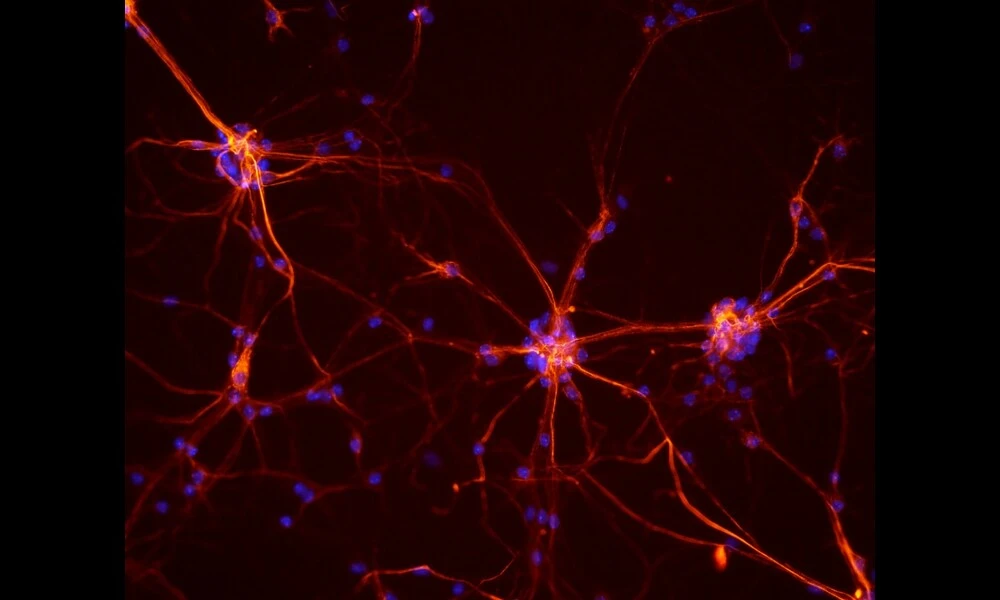Manipulating Neuron Building Blocks Uncovers New Insights into Nerve Growth and Healing Dynamics
Published on Wed Jan 03 2024 Healthy Mouse Spinal Cord Neurons | NIH Image Gallery on Flickr
Healthy Mouse Spinal Cord Neurons | NIH Image Gallery on FlickrIn a groundbreaking study from The University of Hong Kong, researchers have directly manipulated tubulins, the building blocks of microtubules within neurons, to probe how various posttranslational modifications (PTMs) impact nerve cell growth and healing. Their findings, detailed in a preprint paper, uncover intricate dynamics that could reshape our understanding of neural development and regeneration.
Microtubules serve as cellular scaffolding and highways for transporting molecular cargo within neurons. The team focused on neuron-specific tubulins in the nervous system of the tiny worm, Caenorhabditis elegans, exploiting the organism's simplicity and genetic tractability. By precisely editing genes to mimic or block certain PTMs, they forged a direct path to examining the consequences on microtubule function, in stark contrast to earlier studies relying on overexpression of mutant proteins or manipulation of modifying enzymes.
Two key PTMs were found to drastically influence the dynamics of microtubules: phosphorylation and acetylation at specific sites on beta-tubulin. When beta-tubulin's phosphorylation at serine 172 was mimicked, it hindered microtubule assembly, inhibiting nerve growth and disrupting transportation along neurons. A surprising twist, the paper reveals, is that acetylation at another beta-tubulin site also impeded the integration of tubulin into microtubules, echoing the disruptive effects of phosphorylation.
The study also delves into alpha-tubulin's lysine 40 acetylation, a modification traditionally tagged as a marker of stable microtubules. Challenging prevailing notions, the researchers found little to no effect on neuronal morphology or functions when they edited this site, suggesting that its role in neurons might have been overstated.
Further nuances emerged when examining polyglutamylation and detyrosination, PTMs on the tubulin tails protruding from microtubules' surface. Subtler than the beta-tubulin modifications, these alternations seem to regulate interactions with motor proteins, fine-tuning microtubule dynamics without the profound effects on neuron development observed with beta-tubulin modifications.
This study stands out for its precision in dissecting the "tubulin code," wherein different PTMs can lead to diverse microtubule behaviors. Decoding this language has profound implications, as disruptions in these microscopic processes have been linked to neurodegenerative diseases. Understanding the molecular details might open new avenues for therapeutic interventions aimed at repairing damaged nerves and treating neurological disorders.
As the authors themselves suggest, an optimal balance of tubulin PTMs appears crucial for healthy neuronal function, emphasizing a delicate molecular dance within our nerve cells. This work unravels some of the complexity, but also raises new questions, inviting further research into this microscopic world. It's an exploration that could ultimately illuminate much about our brain's inner workings.



